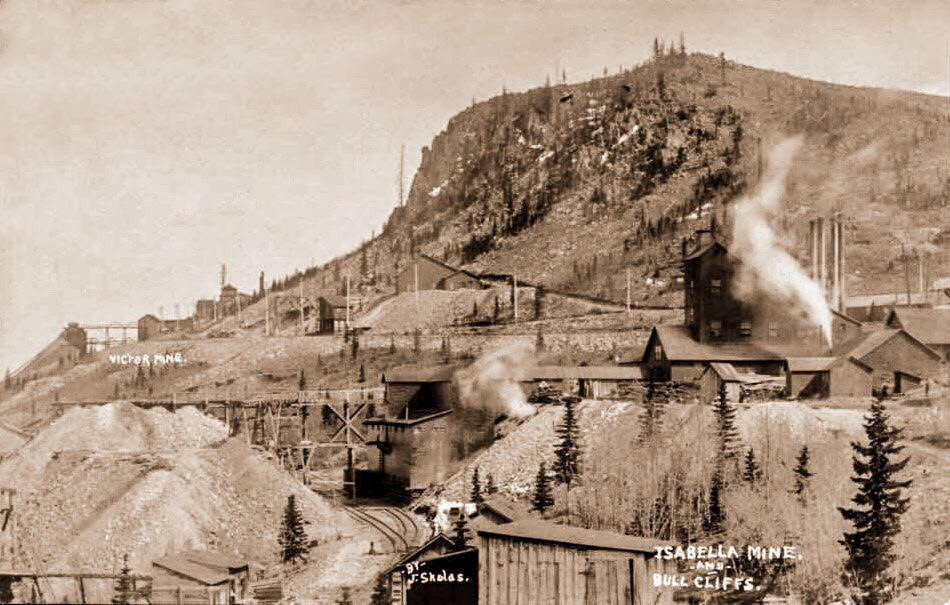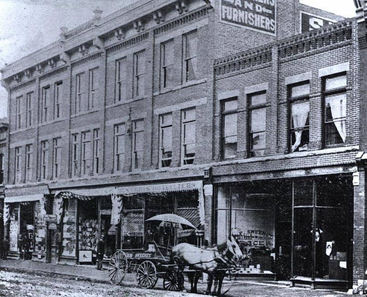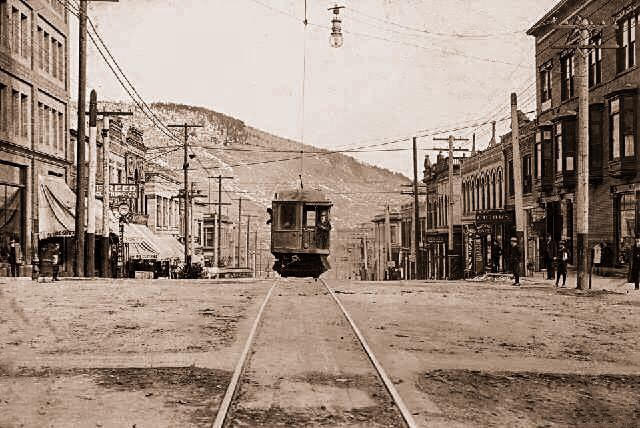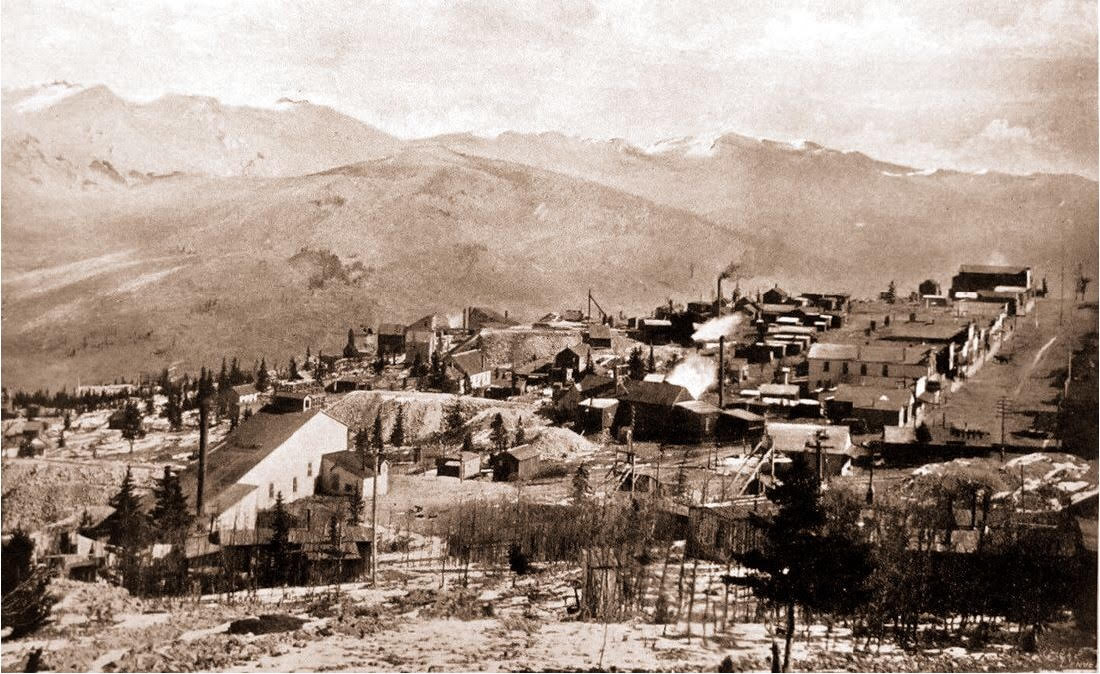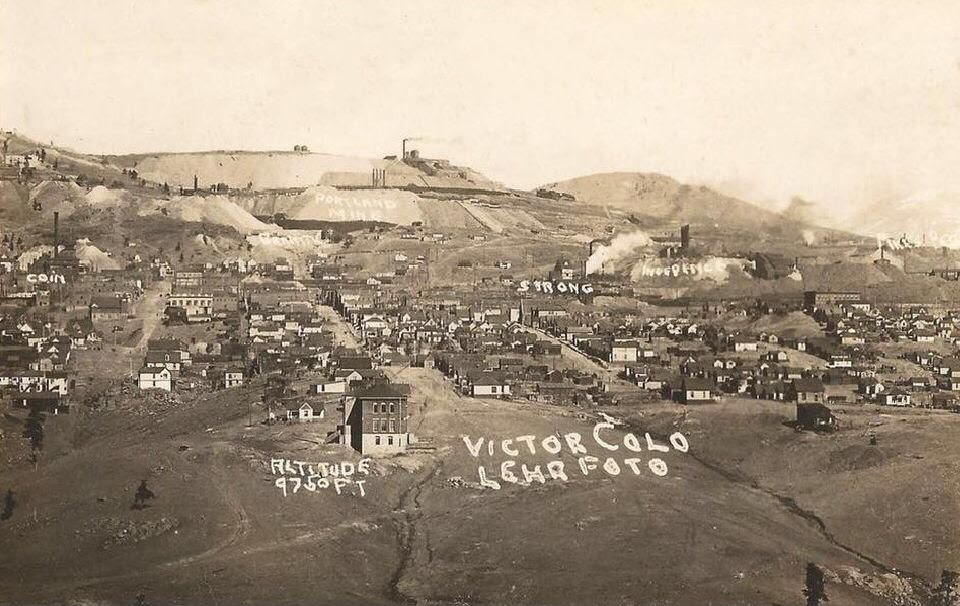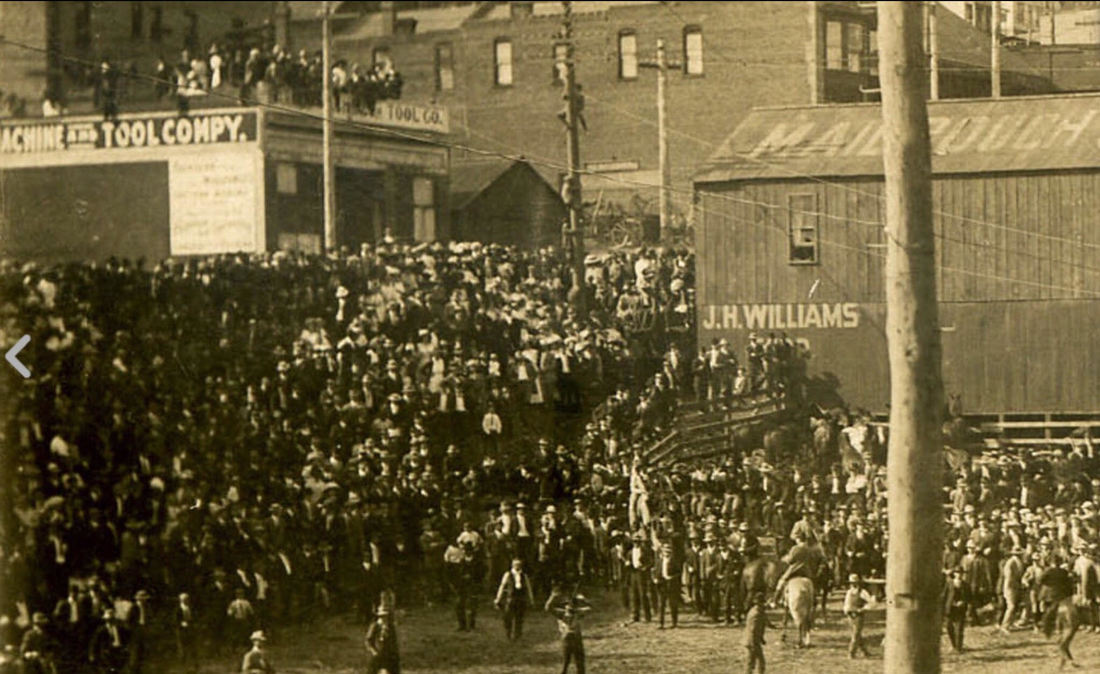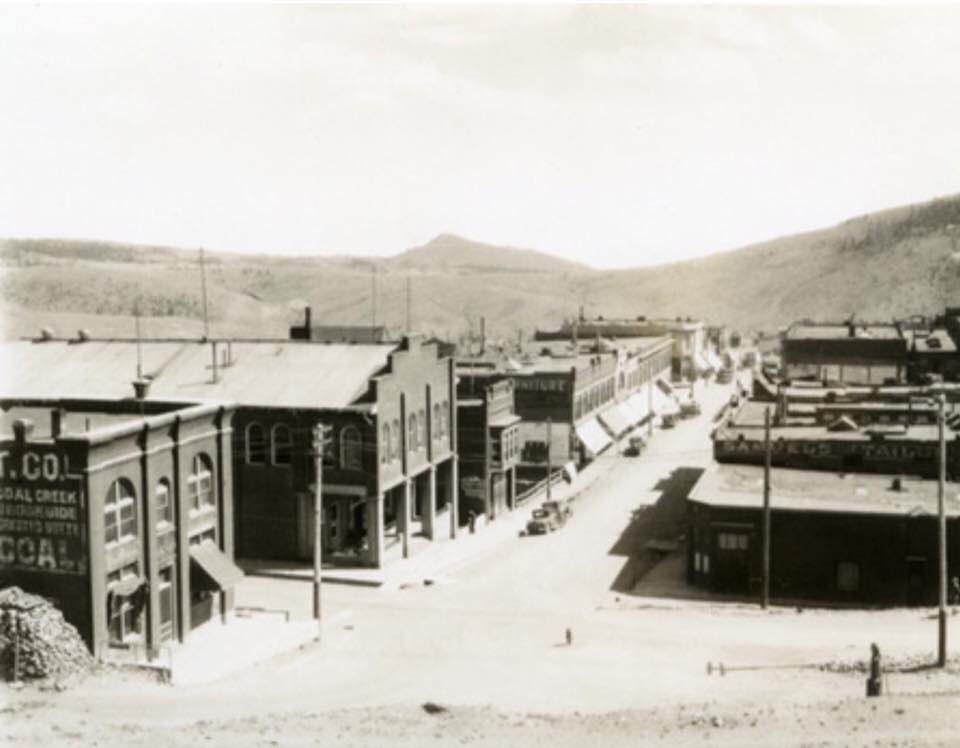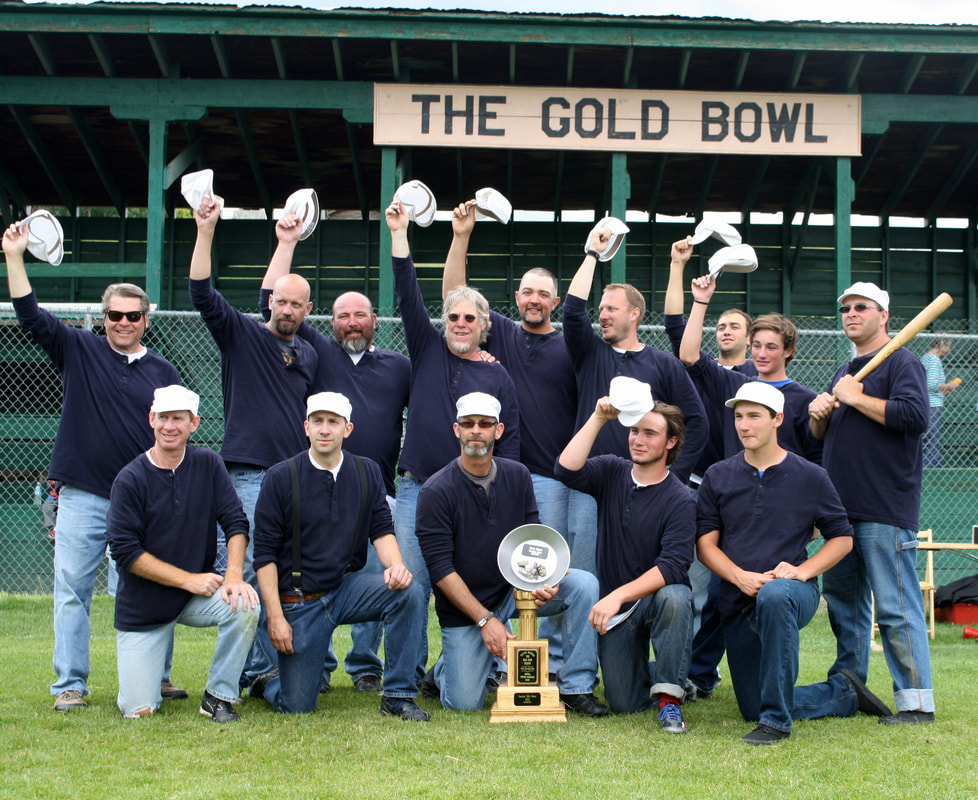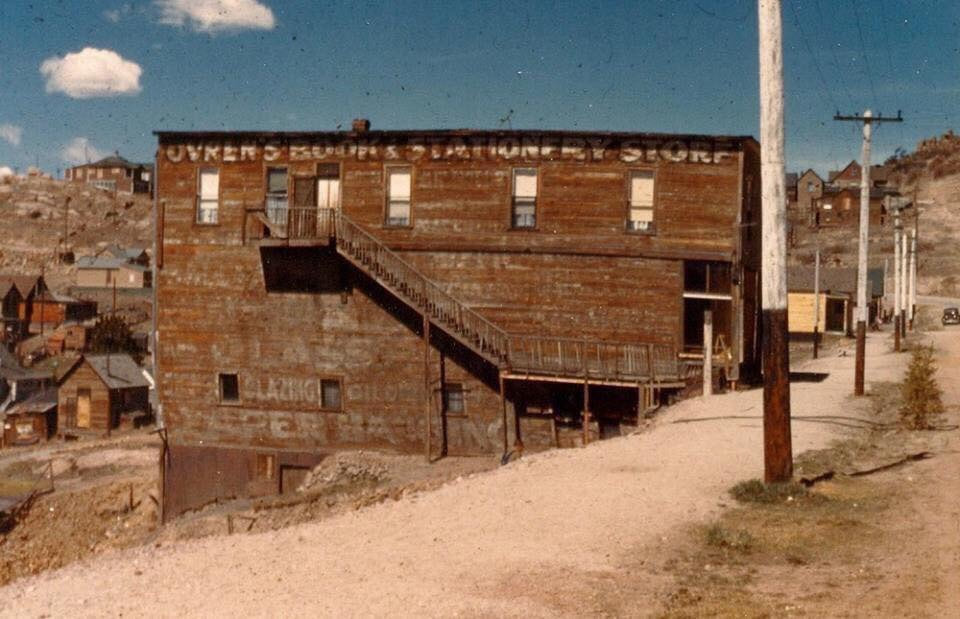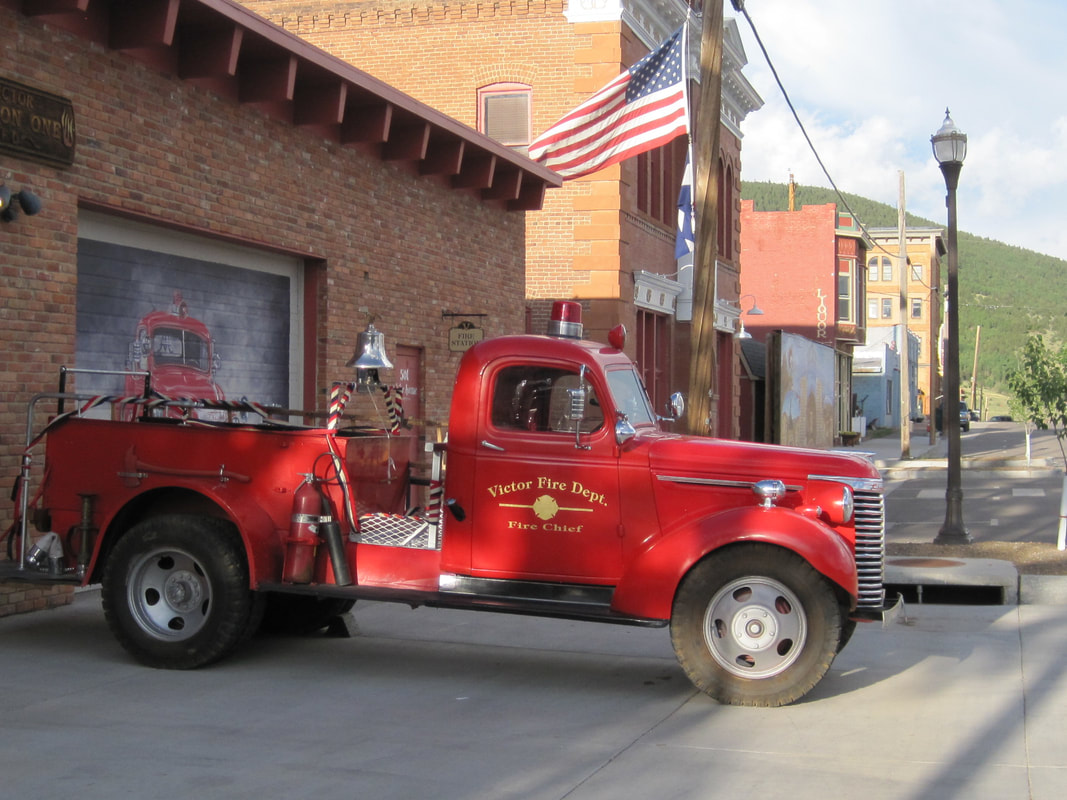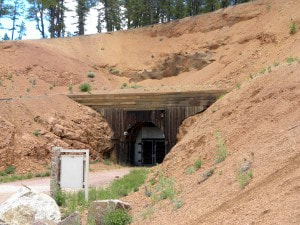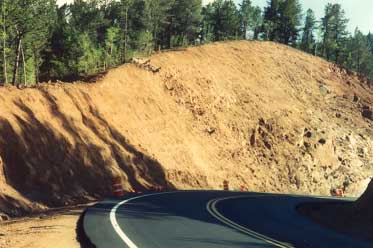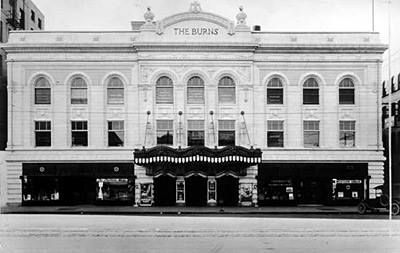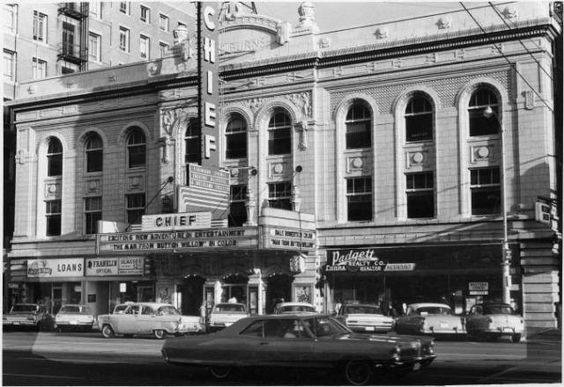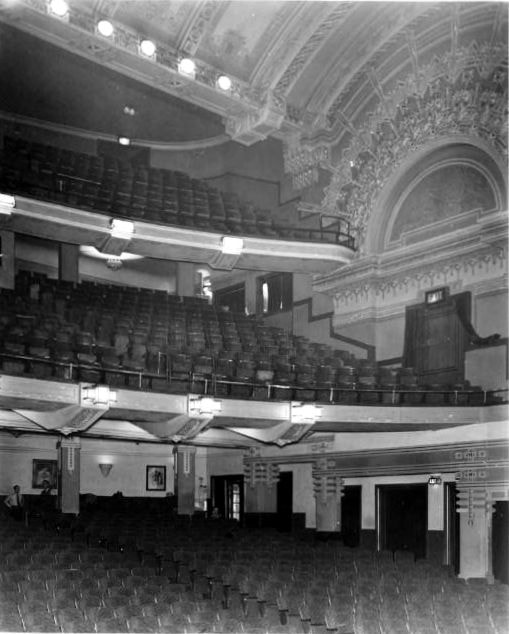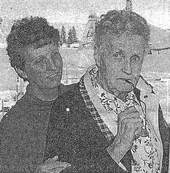 Tish Allen with her mother, Eleanor Baker, January 2000.
Tish Allen with her mother, Eleanor Baker, January 2000.
Installment #2. SEVEN GENERATIONS IN VICTOR, COLORADO AND THE MINING DISTRICT--The Way It Was.
Memories of Eleanor Musser Baker (1920-2003) and her mother, Sadie Alstrum Musser (1890-1965).
Installment #2 submitted (February 2018) by Tish Allen--daughter of Eleanor Musser Baker, granddaughter of Sadie Musser.
My Mother, Eleanor Musser Baker, loved Victor. She was a 2nd generation Victor Native and lived 83 years loving Victor. Her mother, Sadie Musser, was born here in 1890. Both recorded years of memories of the area. They always recalled old friends, old experiences, and old places. Below is the SECOND INSTALLMENT of some notes my Mom recorded. Most come from mom after 1920, but some were recorded by my grandmother after 1890. [Click this highlighted link if you want to view the FIRST INSTALLMENT of their memories before proceeding.]
Memories of Eleanor Musser Baker (1920-2003) and her mother, Sadie Alstrum Musser (1890-1965).
Installment #2 submitted (February 2018) by Tish Allen--daughter of Eleanor Musser Baker, granddaughter of Sadie Musser.
My Mother, Eleanor Musser Baker, loved Victor. She was a 2nd generation Victor Native and lived 83 years loving Victor. Her mother, Sadie Musser, was born here in 1890. Both recorded years of memories of the area. They always recalled old friends, old experiences, and old places. Below is the SECOND INSTALLMENT of some notes my Mom recorded. Most come from mom after 1920, but some were recorded by my grandmother after 1890. [Click this highlighted link if you want to view the FIRST INSTALLMENT of their memories before proceeding.]
Installment #2 Starts Here
ELEANOR BAKER (1920-2003) & SADIE MUSSER (1890-1965) REMEMBER WHEN:
ELEANOR BAKER (1920-2003) & SADIE MUSSER (1890-1965) REMEMBER WHEN:
- There was a legend about the Isabella Mine and a Swede who was leasing there on the 3rd level. He had good ore and he put in a full shift every day. But he nearly froze every day also. It was impossible for him to work hard enough to keep warm in the draft and if he wore more clothes he wouldn’t be able to squeeze into his tight little stope. The vein was only about two feet wide. The upper levels of the Isabella shaft on the north slope of Bull Cliff were cold as icebergs. The reason for this was a tunnel that connected with the shaft. The cold air came in through the tunnel and then up the shaft. The shaft was always damp because of the warm, moist air coming up from the lower levels. They had a door to close off the draft but it had been frozen open for years and nobody bothered to dig it out. Every evening at quitting time, this Swede would climb down out of his stope shivering and shaking, his teeth chattering and his face and hands blue as his eyes. He would be seen in Victor of nights, still shivering and shaking from the cold. The food would even shake off his knife when he was eating, and he had to hold the whiskey glass with both hands to keep from slopping his drink on the floor. Whiskey was the only thing that warmed him, he said. He called it his “Anti-freeze” and he got to drinking all his meals. Then he started having nightmares about the mine and he’d wake up shivering and hoist another shot. One morning he was found dead in his room at the Baltimore Hotel in Victor. He was not only dead; he had frozen to death in a steam heated room.
- Twelve to fifteen trains operating on three different railroad lines came to Victor from Florence and Colorado Springs each day. There were also two street car lines, the Hi Line and Low Line, operated by two different companies and they ran 24 hours a day between Cripple Creek and Victor.
- The mail came in by the railroad in the early years, but later it was trucked in.
- The Altman Post office closed February 1, 1908 after 12 years service. Postmaster H.T. Coppage resigned. After some discussion the office was moved to Midway and Mrs. Edith Doyle took the Postmaster position.
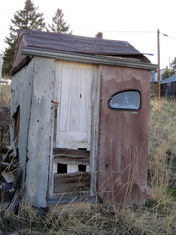 Kids today might be hard pressed to find an Outhouse in Victor. But there is at least one survivor that is in good repair – with electric heat and lights, as well as a “high tech” environmentally approved “waste disposal system”. THIS VINTAGE VICTOR OUTHOUSE IS NOT IT.
Kids today might be hard pressed to find an Outhouse in Victor. But there is at least one survivor that is in good repair – with electric heat and lights, as well as a “high tech” environmentally approved “waste disposal system”. THIS VINTAGE VICTOR OUTHOUSE IS NOT IT.
- The mines would have contests with drilling on the rock ledge on 7th street. [Note from Tish— Evidence of these historical drilling contests can still be seen along the 7th Street rock ledge. Drilling contests and other mining games are still an important part of the annual Gold Rush Days Celebration in Victor.]
- You drove beneath a tressle between the two rock dumps on highway going to Cripple Creek at the Anaconda area. [Note from Tish—Ore processing facilities for the current surface mining operations are now located in the Anaconda area and the highway to Cripple Creek has been relocated to a “land bridge” across Squaw Gulch.]
- Everyone had an Outhouse and at Halloween kids would move them to the middle of Victor Avenue just to get a rise out of the police.
- Three large wolves came down from Bull Cliffs and came within fifteen feet of the Roscoe cottage owned by the Roscoe Leasing Company. One wolf was killed and it weighed 72 pounds.
- The Lincoln School on South 3rd Street in Victor was dedicated April 9, 1901 [photo below]. Supt. Palmer urged the cooperation of the parents to help make the schools better.
- The Old Victor Orphanage was turned into a detention hospital where all contagious diseases will be treated (January 26, 1908). Mrs. J. M. Lind gave the orphanage property. [Note--According to Gertrude Moore McGowan, "The far end of South 3rd Street was part of Lawrence. Beyond there on the east side of Straub Mountain was the Pest House where people with contagious diseases were kept while they were sick."]
- It was announced that the famous Red Light dance hall on North 2nd Street will be used by Barnes Machinery and Tool Company with E. A. Barnes owner. It was to become a first class machine shop.
- In August 1918 Emma Hopkins announced the old Red-light District Houses located east of the Ball Park and close to the Victor High School will be torn down. The buildings were purchased by the firm of Pennington and Harris, together with their contents, with the understanding that the structures be torn down and the ground cleared. There were nearly a dozen buildings in Iniquity Row.
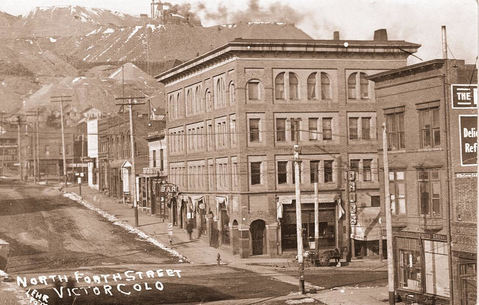 Today's four-story Victor Hotel was built by the Woods Investment Company to replace their original bank building (at this location) and their original hotel building (which was across the street where Jet Service is now located) since both were destroyed in the Great Fire of August 21, 1899. The Emergency Hospital was located on the 4th floor of the building for a short time. After the Woods Bank was declared insolvent in 1903 the building was occupied by successor banks and an assortment of businesses. The restored building is listed on the National Register of Historic Places.
Lehr photo from 1930 provided by LaJean Greeson.
Today's four-story Victor Hotel was built by the Woods Investment Company to replace their original bank building (at this location) and their original hotel building (which was across the street where Jet Service is now located) since both were destroyed in the Great Fire of August 21, 1899. The Emergency Hospital was located on the 4th floor of the building for a short time. After the Woods Bank was declared insolvent in 1903 the building was occupied by successor banks and an assortment of businesses. The restored building is listed on the National Register of Historic Places.
Lehr photo from 1930 provided by LaJean Greeson.
- F&CC Railroad conductor, James Brown, noticed a distressed mountain sheep hanging by its horns and caught in the wire, which saved the animal from certain death (February 10, 1907).
- Frank Benton, owner of the First National Bank Block, announced that Victor is able to support a first class hotel and will make the building into resident bachelors’ quarters. New elevators will be installed and new apartments will be fitted with baths and made into swell living suites. The top floor, occupied by the Emergency Hospital, will probably continue to be used. Mr. Benton obtained the property from the Woods Investment Co. by trading valuable agricultural land in northern Colorado. [Note from Tish--After the Woods financial empire collapsed, their four-story bank building was occupied by many other businesses. Today it is known as the "New" Victor Hotel with two floors rented as office space for the Newmont's Cripple Creek & Victor Mining Company.]
 Today the WPA installed stairs & retaining wall around the Victor High School serve the High Elevation Training Center & Rocky Mountain Soccer Camp.
Today the WPA installed stairs & retaining wall around the Victor High School serve the High Elevation Training Center & Rocky Mountain Soccer Camp.
- On May 8, 1915 the Grand Army of the Republic announced the remains of the departed members will be removed to Sunnyside cemetery (from the GAR cemetery) to a plot secured by members of the Women’s Relief Corps.
- Mr. Martello had a pool hall on Victor Avenue next to the Quality Cash. He had a punch board and the kids would win candy off of it. [Note--A story about Charlie Clark's Quality Cash Market also can be viewed in the Oral History Pages.]
- The old dance hall building on the corner of North 2nd Street and Diamond Avenue partially collapsed. No attempt was made to repair the structure (June 6, 1915).
- The kids used to have to walk up the hill on a dirt path to school. [Note from Tish--As the population declined, one-by-one the Lincoln, Garfield, and Washington schools were eventually closed and torn down. Only the Victor High School remains today.]
- The WPA put steps in, planted trees, and built the retaining wall around the Victor High School. [Note from Tish—the Works Progress Administration was established by President Franklin Roosevelt in 1935 to provide jobs for the unemployed and make public improvements during the Great Depression.]
- The Gold Bowl caved in on the southeast side, because of old mine workings underneath, and so did the playground at the school.
- The Power Company had cooking school in the Elk’s kitchen. There was a drawing to give away prizes. The Power Company displayed and sold the newest appliances in their office space.
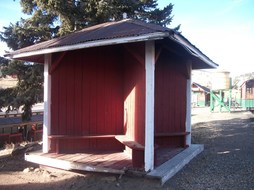 Waiting Station moved from Pinnacle Park to Cripple Creek. Photo complements of Shirley Beach.
Waiting Station moved from Pinnacle Park to Cripple Creek. Photo complements of Shirley Beach.
- There was a golf course North and South of the Phantom Canyon Road and the road ran further North near the south edge of Goldfield before they opened it across the old Mill Tailings.
- There was a process mill on the East side of Victor, below Goldfield. A stream of water flowed from it and in the summer the kids would make wooden stick boats and race them down the Cyanide trestle and tracks. The kids used to have baseball games on the Cyanide Dump near the Canyon Road.
- The waiting station was moved from Pinnacle Park to the Cripple Creek Museum. [Note from Tish--The waiting station was a covered wooden structure shaped like an "X" that had four open sides with benches.]
 Victor Avenue Looking West--Gravel Gold Bowl Ball Field (right foreground). Original 1950's photo by Emma Peters (colorized in 2018 by Tim Wager and contributed by Emma Peter's granddaughter, LaJean Greeson).
Victor Avenue Looking West--Gravel Gold Bowl Ball Field (right foreground). Original 1950's photo by Emma Peters (colorized in 2018 by Tim Wager and contributed by Emma Peter's granddaughter, LaJean Greeson).
- The Trading and Transfer building top story burned. The fire was started by someone stealing coal for his family. [Pre-fire photo below, additional photos and history of the Colorado Trade & Transfer Building in Victor can be found by scrolling down the LANDMARKS Page.]
- The Gold Bowl was gravel and there would be a baseball game every Sunday afternoon in the summer. [Note from Tish--In recent years the ball field in the Gold Bowl has been upgraded with amended soil, drought resistant turf, fencing and restoration of the viewing bleachers; see photo below.]
- Cripple Creek had the only stop light in Teller County.
- The booths at the Stope Café were built like ore carts. The Stope was owned by Lillian Titmas and then Zora Hansen. [Note from Tish--the "Stope Cafe" on S 3rd St eventually became the last location for "Zeke's Place".]
- The skating rink was next to Ovren’s store across from City Hall--below the wooden sidewalk. [Note from Tish--See photo below of the huge Ovren's Store building once located across from City Hall. Painted signs on the building advertised books, stationary, and Liberty Overalls. Ovren's also sold furniture.]
- Rudy Balke donated money to the city to build the emergency services building & health trust (1977). [Click highlighted link for "Memories of Rudy Balke, Victor's Benefactor" by Chuck Clark.]
- The Trading and Transfer weighed the coal trucks on a scale on Diamond Avenue across from the Elks.
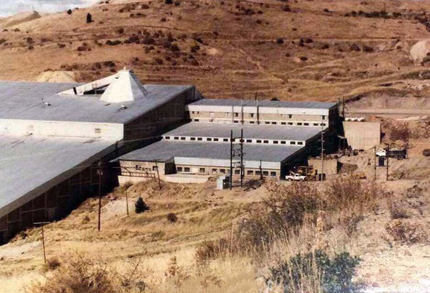 Carlton Mill, 1983 photo taken by Arthur Coltrin & contributed by LaJean Greeson.
Carlton Mill, 1983 photo taken by Arthur Coltrin & contributed by LaJean Greeson.
- There was a gas and supply station across from the Carlton Mill on Hwy 67.
- You would rush through the scale house at the Carlton Mill going/coming from Cripple Creek. [Note from Tish--The Carlton Mill in Arequa Gulch was dismantled in the 1990's and replaced with more efficient ore processing facilities. A gigantic leach pad towering higher than the surrounding mountains now occupies this site.]
- The road to Colorado Springs was dirt all the way and came up through the old 4-mile road. People would have to back up the switch backs in winter when it was slick. Roads weren’t plowed as much then and very few had 4-wheel drives.
- They put in an airport at Gillette and a plane was housed in the old wooden hanger. When a local boy crashed his plane on a visit they quit using it because of the wind gusts causing problems.
- Joe Vetter opened the Ski Run on Tenderfoot, with a Lodge, and then we stopped having the heavy snows. [Note from Tish--Click the highlighted link for photos and memories of the unsuccessful Tenderfoot Mountain Ski Area once located near Cripple Creek.]
- You would pick up the telephone and tell the operator who you wanted to talk to if you didn’t remember the telephone number. Sometimes four or five different houses would pick up the party line and visit in on the conversation.
- You only went through Woodland Park on the highway if you only needed gas or medicine.
- Victor used to have a big May Day Celebration at City Hall complete with May Pole.
|
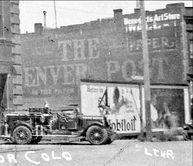 Billboards east of City Hall. Historical Lehr photo from LaJean Greeson.
Billboards east of City Hall. Historical Lehr photo from LaJean Greeson.
- In the late 1920’s Eleanor’s Uncle Percy Cartee and his Lease Friend, Fred Olson’s brother, had a good lease together. They went to Bison to celebrate. At that time they allowed boats at Bison. Their boat tipped and they drowned. Percy’s son, little Percy, was on the bank with his mother Adeline picnicking and he ran around the lake crying “daddy, daddy”. He was five at the time. This was the last time they allowed boats at Bison. The fire department was called to respond to that – it was at the Victor water property.
- Cusack owned a Billboard and Sign Company. The Cusaks lived in the estate on Ute Pass near Cascade. He owned all the Billboards. They owned a billboard on Third Street and also East of City hall was one of theirs. Young Percy Cartee ended up working for Cusack. He would go all around Victor, Cripple Creek and Colorado Springs and put up new billboard signs. His mother, Adeline (Eleanor’s aunt) worked in the Colorado Springs Antlers Café Pantry.
- The Chief Theater in Colorado Springs always raffled a basket of Groceries on weekends and they always had a live vaudeville. One night Percy took the family to the Chief and they won the basket of groceries. Eleanor remembered going up on the stage to claim the basket with her brother, Carl, and was shocked at how big the stage and the audience seating seemed. The Chief was one of the grand theaters. [Note from Tish--James Burns, who made his fortune from the Portland Mine on Battle Mountain, lived in a mansion in Colorado Springs where he also constructed the Burns Opera House that later became the Chief Movie Theater (photos below). Ron West, acclaimed Burns impersonator, shared his Chautauqua presentation about the life of James Burns at a July 2017 event sponsored by the Victor Heritage Society.]
- In the early 1920’s Eleanor rode the streetcars in Colorado Springs when they would visit her Aunt Adeline. They always seemed big and noisy and scared most of the kids. [Note from Tish--The streetcar system in Colorado Springs was built with money donated by another Battle Mountain mining mogul, Winfield Scott Stratton. The Independence Mine, claimed on July 4th, 1891, made Stratton the first millionaire in the Mining District. Much of Stratton's wealth was donated to civic causes in Colorado Springs.]
THE PAST MATTERS. PASS IT ALONG.
The Next Generation Will Only Inherit What We Choose to Save and Make Accessible.
Please Share Your Memories and Family Connections to Victor & the World's Greatest Gold Camp
By Contacting Victor Heritage Society, PO Box 424, Victor, CO 80860 or e-mail [email protected].
The Next Generation Will Only Inherit What We Choose to Save and Make Accessible.
Please Share Your Memories and Family Connections to Victor & the World's Greatest Gold Camp
By Contacting Victor Heritage Society, PO Box 424, Victor, CO 80860 or e-mail [email protected].
VictorHeritageSociety.com
Copyright © 2023 Victor Heritage Society. All Rights Reserved.
Copyright © 2023 Victor Heritage Society. All Rights Reserved.
